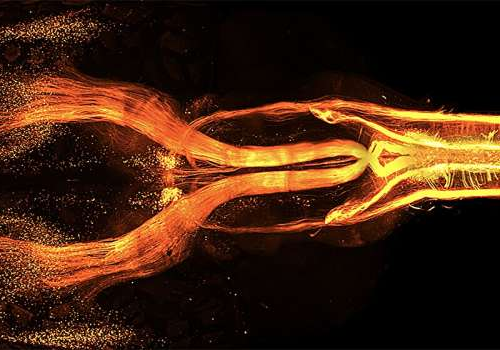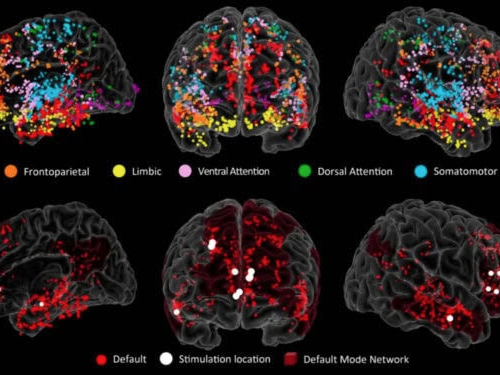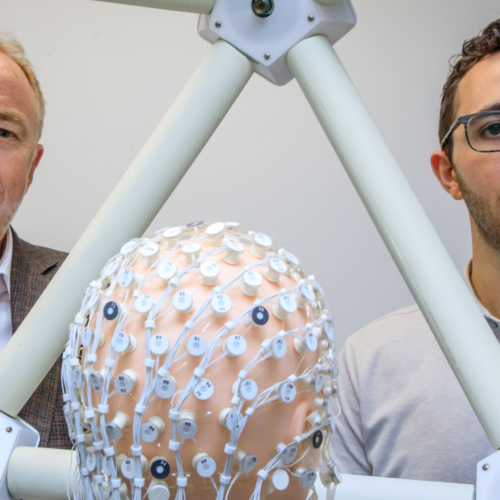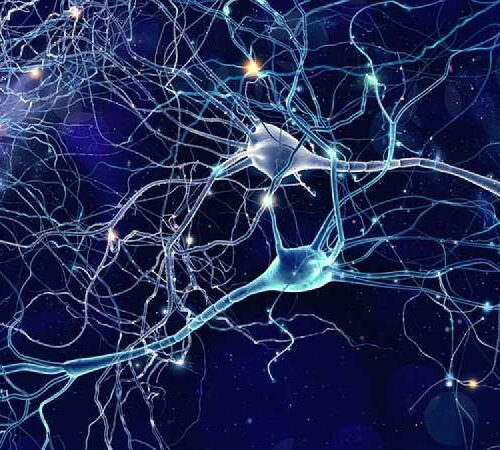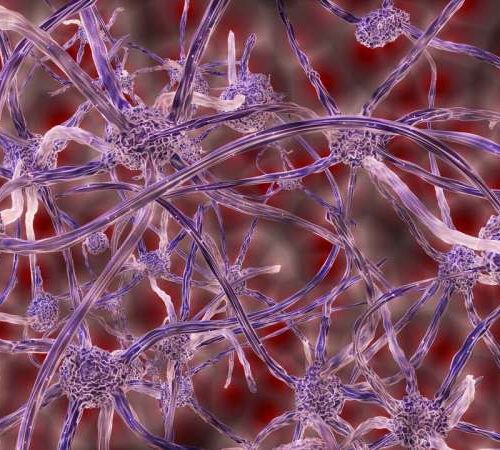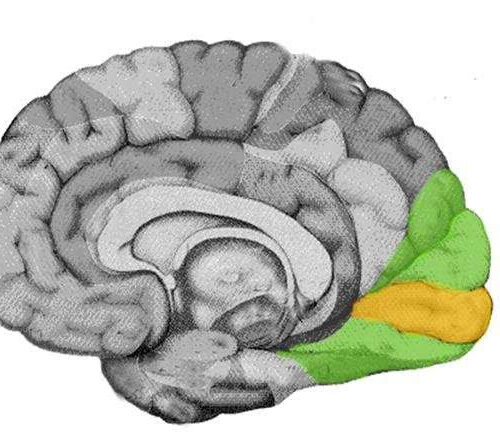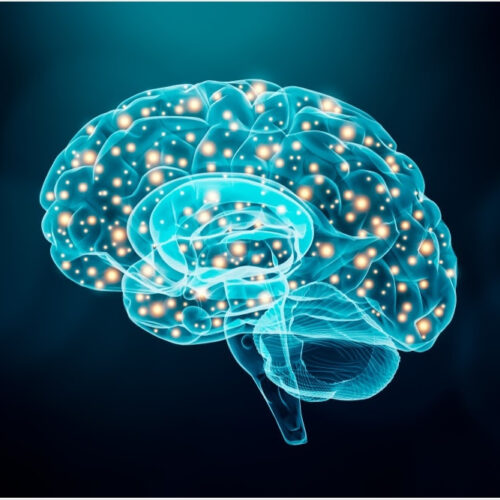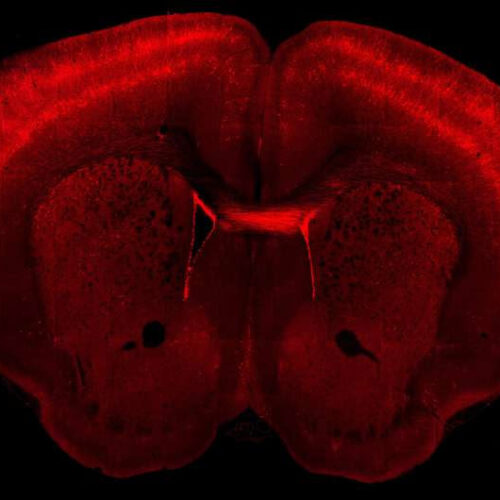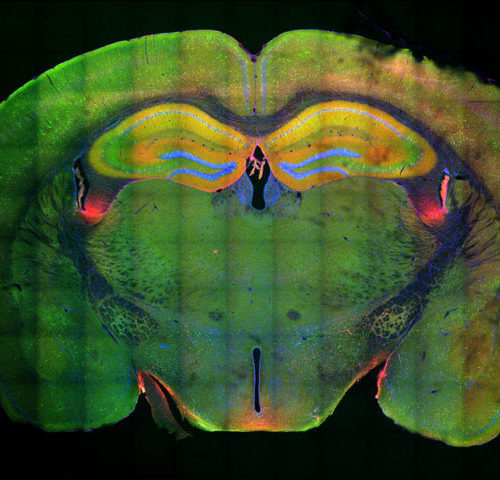September 23, 2024 by University of Geneva The image shows corticospinal neurons in a mouse brain. Credit: Philipp Abe and Advanced Lightsheet Imaging Center Campus BiotechA UNIGE team has discovered the genetic programs that allow motor neurons to retract from the spinal cord. This discovery opens up prospects for combating neurodegeneration. The motor cortex is...
Tag: <span>Neuroscientists</span>
Neuroscientists identify brain network critical for creative idea generation
by Eric W. Dolan August 11, 2024in Cognitive Science, Neuroimaging Electrodes at multiple brain regions reveal brain activity in real time. Colored dots show the locations of all of the electrodes across all patients, color-coded by brain region. Red dots in the lower images show the locations of the electrodes in the DMN. (Credit: Bartoli,...
‘Incredible progress:’ Western neuroscientists reveal thoughts of brain-injured patients
Adrian Owen and Karnig Kazazian use brain activity patterns to predict survival rates of ICU patientsBy Jeff Renaud,July 22, 2024 (L to R) Adrian Owen and Karnig Kazazian combine different neuroimaging methods to assess patients at the bedside in the first few days after their brain injury. (Christopher Kindratsky/Western Communications) The very thought of being...
Neuroscientists get a new view on how neurons communicate
by Laurel Hamers, University of Oregon An often-overlooked communication strategy for neurons might be more prevalent than previously believed. New research from biology professor Adam Miller’s lab in the UO’s College of Arts and Sciences illuminates the importance of neuron-to-neuron communication via direct electrical signaling, instead of the usual chemical messengers sent between cells. The team...
Neuroscientists challenge long-held theory about neural pathways in the basal ganglia
by Caroline Sheedy, Carnegie Mellon University Credit: Pixabay/CC0 Public Domain In a paper published in Neuron, Aryn Gittis and colleagues present new information about a neural pathway in the basal ganglia, a part of the brain important for skill learning, habit formation and motor control. The paper contradicts the model that has guided researchers’ understanding of motor...
Neuroscientists find new factors behind better vision
by James Devitt, New York University Credit: public domain The size of our primary visual cortex and the amount of brain tissue we have dedicated to processing visual information at certain locations of visual space can predict how well we can see, a team of neuroscientists has discovered. Its study, which appears in the journal Nature Communications,...
BrainGlobe; An Open-Source Platform for Neuroscientists
Interview conducted by Emily Henderson, B.Sc.Dec 15 2021 Thought LeadersDr. Adam Tyson Professor Troy MargrieBrainGlobe An interview with Professor Troy Margrie, Associate Director of the Sainsbury Wellcome Centre, and Dr. Adam Tyson, former member of the Margrie lab and now the Scientific Software Lead at the Institute of Cancer Research. Please could you introduce yourself and...
Neuroscientists roll out first comprehensive atlas of brain cells
by University of California – Berkeley Brain slice from a transgenic mouse, in which genetically defined neurons in the cerebral cortex are labeled with a red fluorescent reporter gene. Credit: Tanya Daigle, the Allen Institute When you clicked to read this story, a band of cells across the top of your brain sent signals down your...
Hidden hearing loss is hitting people of all ages. Neuroscientists are still debating why
Sarah Scoles January 21, 2020 Some of the hearing loss we’ve blamed on age might be due to how many fire trucks we’ve stood next to. But there are still ways to diagnose—and protect—against that environmental damage.Anthony Gerace Tucked inside the air traffic control tower in Portland, Maine, Samantha Bassett was busy making sure planes didn’t...
Neuroscientists discover a molecular mechanism that allows memories to form
When the brain forms a memory of a new experience, neurons called engram cells to encode the details of the memory and are later reactivated whenever we recall it. A new MIT study reveals that this process is controlled by large-scale remodeling of cells’ chromatin. This remodeling, which allows specific genes involved in storing memories...

